#Orson Welles Almanac
Text
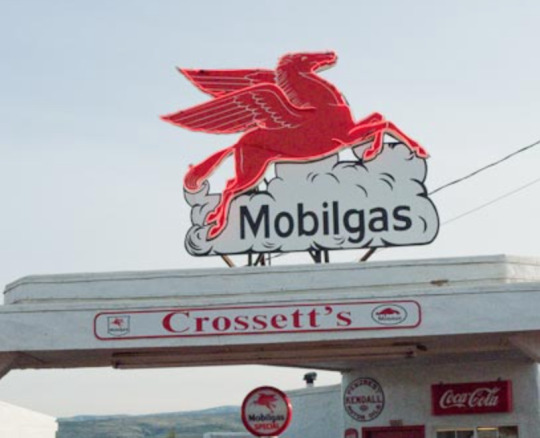

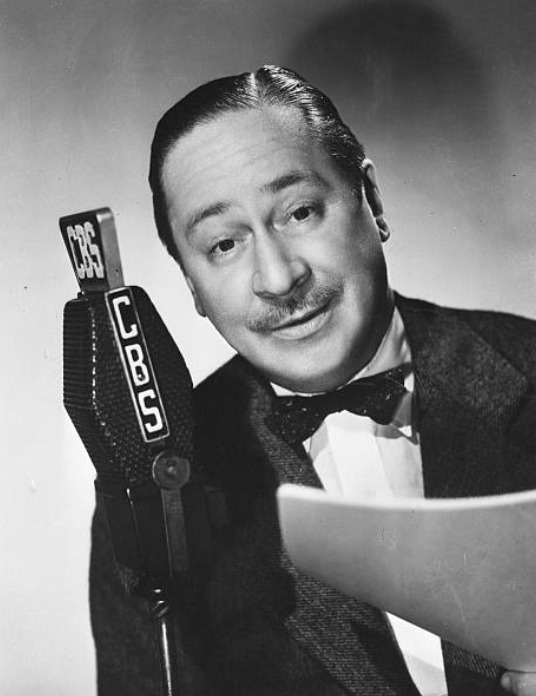
youtube
The flying red horse presents Orson Welles Almanac (1944) with special guest star Robert Benchley
3 notes
·
View notes
Text
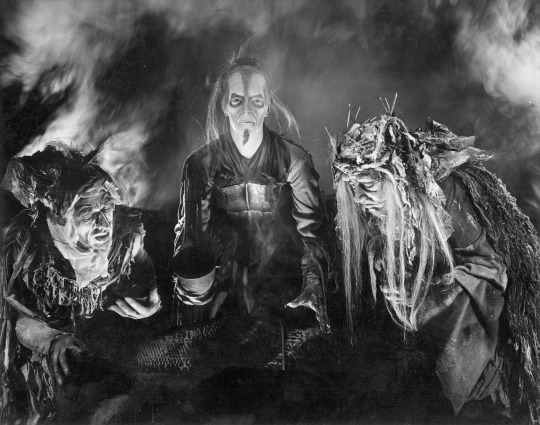
On this day:
CURSED MACBETH
On May 10, 1849, outside of Astor Place Opera House in New York City, where Macbeth was being performed, more than 10,000 people gathered to protest a British actor. Riots broke out, and the militia fired into the crowd. Hundreds of people were injured, thirty-six critically and twenty-three fatally.
The curse of Macbeth began at its opening in 1606. Fever struck the boy playing Lady Macbeth, and he died backstage. A few incidents from over three hundred years of misfortune are:
* King James I banned Macbeth, and the theater burns down, destroying costumes, props, and scenery.
* A nobleman crosses the stage during a performance and is driven off by the actors. He later returns and burns down the theater.
* Covent Garden burned to the ground after its season opened with Macbeth; twenty-three people were killed and priceless sheet music and manuscripts were destroyed.
* Abraham Lincoln was assassinated days after reading Macbeth aloud to friends.
* Orson Welles produced a "voodoo" Macbeth using African drummers and a witch doctor. A critic who panned the show was dead within the week.
* In one production, three of the cast died, and the costume and set designer committed suicide.
* An outdoor performance venue burned down with a shift of wind, and two nuns sitting in the front row were nearly decapitated by a flying shield.
* An audience member committed suicide jumping from the balcony into the orchestra pit.
There are also numerous accounts of deaths and maiming from onstage swordplay, heart attacks during performances, falling sets (sometimes fatal), dangerous weather or other circumstances on opening nights, more fires, and more deaths by suicide, accidents, and "natural causes."
The curse is rumored to be the result of Shakespeare's use of actual black magic incantations in the script. Inside theaters, Macbeth should be referred to not by name, but as "the Scottish Play."
Text from: Almanac of the Infamous, the Incredible, and the Ignored by Juanita Rose Violins, published by Weiser Books, 2009
3 notes
·
View notes
Text
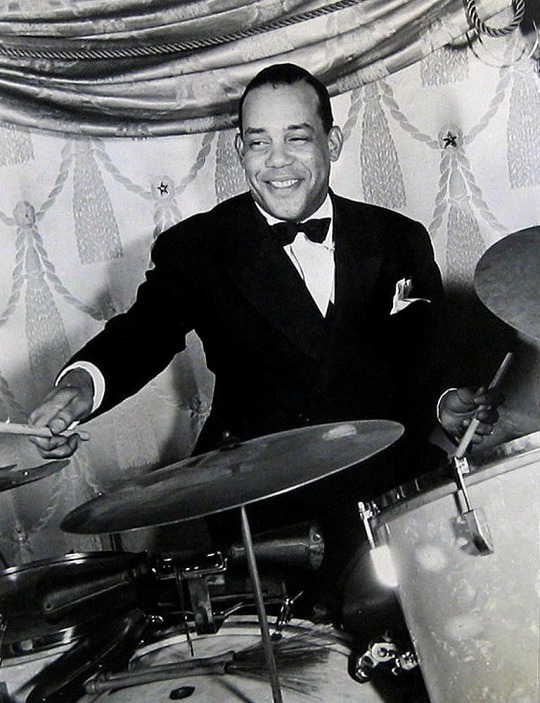
Arthur James “Zutty” Singleton (May 14, 1898 – July 14, 1975) was a jazz drummer.
His unusual nickname, acquired in infancy, is the Creole word for “cute.”
He was working professionally with Steve Lewis. He served with the Navy in WWI. He worked with such bands as Papa Celestin, Big Eye Louis Nelson, John Robichaux, and Fate Marable. He left for St. Louis, to play in Charlie Creath’s band, then moved to Chicago.
He played with Doc Cook, Dave Peyton, Jimmie Noone, and theater bands, then joined Louis Armstrong’s band with Earl Hines. He performed on landmark recordings with Louis Armstrong and his Hot Five. He moved with Armstrong to New York City.
In addition to Armstrong, in New York, he played with Bubber Miley, Tommy Ladnier, Fats Waller, Jelly Roll Morton, and Otto Hardwick. He played in the band backing Bill Robinson. He returned to Chicago. He returned to New York, working with Mezz Mezzrow and Sidney Bechet.
The British thriller writer, Eric Ambler, author of A Coffin for Dimitrios, and other novels, saw him perform in New York and became an instant fan. In his autobiography, Here Lies, Ambler mentions getting an autographed photo of the drummer, which he prized.
He moved to Los Angeles, where he led his band, played for motion pictures, and was featured on Orson Welles’s CBS Radio series, The Orson Welles Almanac. He worked with such jazz musicians as Slim Gaillard, Wingy Manone, Eddie Condon, Nappy Lamare, Art Hodes, Oran “Hot Lips” Page, and Max Kaminsky. #africanhistory365 #africanexcellence
0 notes
Text
Welles and Freud
Orson Welles and Sigmund Freud share a birthday, so I wondered what else they might share.
Sigmund Freud and Orson Welles share a birthday of May 6. Of course, even if you believe in astrology, the fact that they were born in 1856 and 1915 respectively would mean different star charts. I saw the birthdays on an almanac site this past week and out of pure curiosity looked at their Taurus description. It said strong work ethics, reliability, and an appreciation of life’s pleasures. Not a…
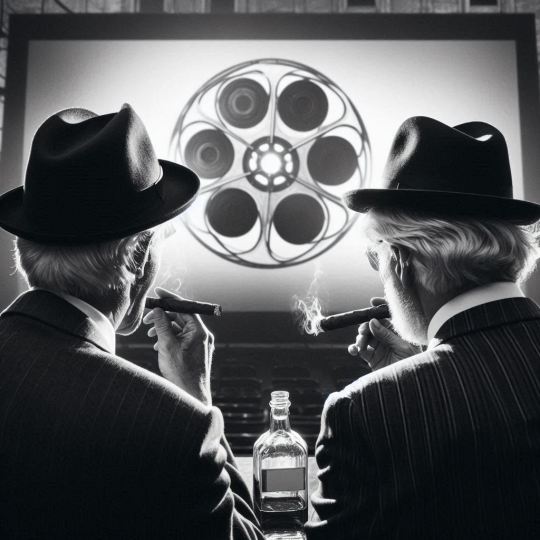
View On WordPress
1 note
·
View note
Text
ORSON WELLES ALMANAC
May 3, 1944

“Orson Welles Almanac” aka “The Orson Welles Wonder Show” (1944) is a CBS Radio series directed and hosted by Orson Welles. Broadcast live in California and Arizona via CBS West Coast studios, the 30-minute program was heard Wednesdays at 9:30pm beginning January 26, 1944. Its last broadcast was July 19, 1944. Orson Welles Almanac presented readings from classic works, drama, music, sketch comedy, magic, mindreading, and personal commentary by Welles. Many of the shows originated from US Army camps where Welles entertained the troops. Welles had an ongoing battle with the program’s sponsor, Mobil Oil, which shortened the life of the series. Twenty six broadcasts were produced; all but four shows have survived.
This is the 15th episode of the series, aired on May 3, 1944. Previous guests were Groucho Marx, Lionel Barrymore, Ann Sothern, Robert Benchley, Hedda Hopper, and Victor Moore. Lucille Ball previously guest-starred on the series on March 3, 1944.
CAST
Lucille Ball (Guest Star) was then filming Ziegfeld Follies for release in 1945. Her films Best Foot Forward and Thousands Cheer (both released in 1943) were still in local cinemas. Ball was in her fourth year of a rocky marriage to Desi Arnaz, who she would divorce in September 1944, although the papers were never officially filed. Two days earlier, she had be heard in “A Night To Remember” for radio’s “Screen Guild Players.”
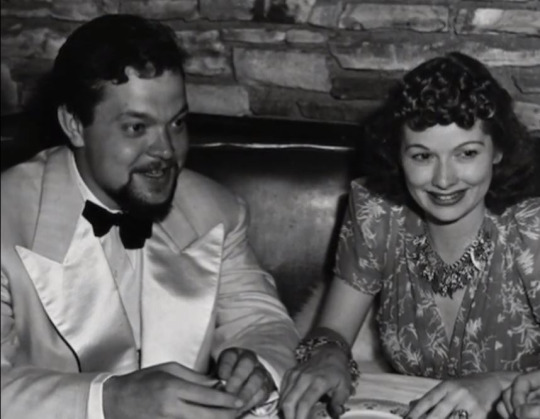
Orson Welles (aka ‘Wonder Boy’) arrived in Hollywood in 1939 when Ball was a contract player at RKO Studios. To squelch rumors that he was a homosexual, the studio sent Lucy to escort him to a premiere to be photographed. He later recalled,
“We went to see the opening of some movie or other—I simply picked her up at her house and we went to the movie and got photographed and came home and I said ‘Good night,’ and that was the end of that. That was the end of that romance, but it was the beginning of a long friendship.”
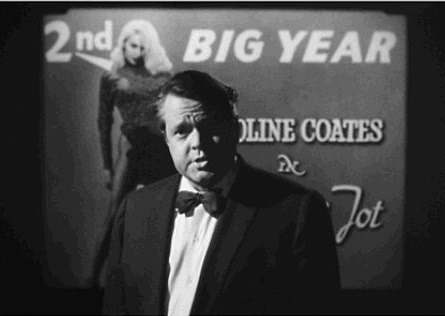
A veteran of the theatre, in 1941 the actor / director completed his magnum opus film Citizen Kane. In the 1950s he was under contract to Desilu to film a pilot for an anthology series called “The Fountain of Youth,” which wasn’t aired until 1958 and did not result in a series. Despite that, it won a Peabody Award, the only pilot to ever do so.

On February 5, 1956 Lucy and Desi appeared with Welles on Ed Sullivan’s “Toast of the Town.” They were there to promote their film Forever Darling. Welles was there to promote his revival of his King Lear at New York’s City Center, which he initially performed in a wheelchair due to injuries to both ankles. By the time he performed it on “Toast of the Town” (aka “The Ed Sullivan Show”) Welles was using a crutch.

When the Oscar-winning actor and director was down on his luck he was invited to stay in the Arnaz guest cottage. Notorious for his drinking and rude behavior, Lucy had to find a way to politely get rid of her guest so she decided to have an episode of “I Love Lucy” written for him so she could pay him a salary. With that in mind, Desilu paid him the exorbitant sum of $15,000! Ball’s memories of Welles were mixed. “I had a real love-hate relationship with Orson,” she said towards the end of her life. “His mind was awesome…but he was also a pain in the ass.”

At the time of this broadcast (March 8, 1944) Welles’ film Jane Eyre was playing in cinemas.

Aurora Miranda (Musical Guest) was a Brazilian singer and actress. She began her career at the age of 18 in 1933. Miranda appeared in several films, including The Three Caballeros, where she danced with Donald Duck and José Carioca, singing the song, "Os Quindins de Yayá". Her sisters were Carmen Miranda and Cecilia Miranda.

The All-Star Jazz Group: Mutt Carey (trumpet), Kid Ory (trombone), Barney Bigard (clarinet), Buster Wilson (piano), Bud Scott (guitar), Ed Garland (bass), and Zutty Singleton (drums).
John McIntire (Announcer)
EPISODE
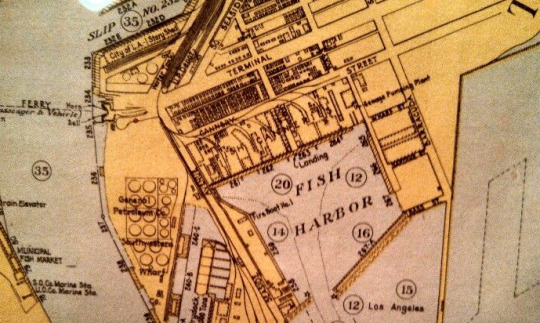
This episode was broadcast from the Naval Air Station at Terminal Island, San Pedro, California, at the time, the fastest ship-building station in the world.
ORSON: “All the way out I had to sit on Lucille Ball’s lap!”
The sailors in the audience respond very vocally to Lucille.
Orson and Ball enact a scenario depicting Lucille Ball pulling over to pick up a prudish sailor who is hitchhiking. The sailor says he’s headed to the Museum of Natural History, and maybe the Aquarium. They drive off, the sailor uncharacteristically staving off Lucille’s advances. He admires her car - a 1941 Cadillac.
ORSON: “You get much pick-up?”
LUCILLE: “You’re the third today!”
She takes him on a ‘short-cut’ and they run out of gas. She wants to stay and cuddle...but he is afraid. Afraid that the museum will be closed!

Welles introduces Aurora Miranda to Lucille Ball. He has to ‘translate’ her heavy accent. She sings "No Tabuleiro da Baiana", with Welles joining her briefly in duet.
Lucille asks Orson if she can do a love scene with one of the sailors. He recruits someone from the audience - George. Although he claims no acting experience, he knows he can kiss! Orson sets the scene: a boy comes home from college to meet his sweetheart for the first time in a long while. Orson acts as a director.
ORSON: “Woah! Slow down! What’s the rush?”
GEORGE: “I’m expecting a transfer any minute.”
Although the scene calls for hand-holding the sailor puts his arm around her. Lucy senses that Orson is deliberately intervening to prevent him from kissing her, but finally he does.
ORSON: “Cut! That’s it! This isn’t commando tactics! She’s an actress, not an obstacle course!”

Orson introduces the All-Star Jazz Band playing “Savoy Blues.” The piece was first recorded by Louis Armstrong in 1927 and was composed by Kid Ory, who plays trombone here.

Orson Welles reads the honor speech from Shakespeare’s Henry V on the subject of honor.

In 1965, Welles made a film called Chimes at Midnight (aka Falstaff) which incorporated monologues from several of Shakespeare’s “Henry” plays, including Henry V.
#Orson Welles#Lucille Ball#Shakespeare#Aurora Miranda#Orson Welles Almanac#1944#Terminal Island#Falstaff#Henry V#Savoy Blues#Kid Ory#All-Star Jazz Group#Jane Eyre#I Love Lucy#Radio
3 notes
·
View notes
Text
Full Moon February 9th, 2020

This month, finds us with a Super Moon on the Full Moon. The Super Moon will often magnify the Full Moon effects, bringing a particular focus on exposing any lies or manipulation that is in our relationships. This can be exposing our lies and manipulations, or showing us where others are telling us lies or trying to manipulate us.
Our Full Moon this month also falls under a Void of Course influence, which means that the influences of it are not strongly attached to any sign. It is in a sort of in between space referred to as “void” of definite influences from a sign. This often times creates a more open time where anything is possible; but has gotten a bit of a “bad rap” for being a time of strange happenings.
Moon dates are based on UTC, so there may be some fluctuation on the dates based on where in the world you are located.
Keep in mind that signs listed with the Full and New Moons may or may not coordinate with traditional insights. Since I use a different perspective to consider the sign that the moon is in; that does not always coordinate with traditional astrology guidelines for what sign it is in.
February 9th Full Moon Void of Course
In the realm of codes this full moon is not actively attached to any sign; but is only holding on by a thread with a connection to Leo. Honestly the Full Moon energy can be disruptive enough on its own merits; and this one seems to hold some additional turbulence to it this month. This comes from having its own energy magnified as a result of not being strongly attached to any sign, and due to how the codes interact with it this month.
This Full Moon is likely to be stirring up inner and outer world turmoil. Most people don’t do well with change, limbo, and uncertainty to start with; however, when that hits us in more emotional ways and the triggers become active or buttons get pushed in this area it can be easy for things to get out of hand. We need to remember to thank those that are able to stand strong in the midst of their fears, danger, and major turbulence; because they are the ones that will get us through right now. They are also the ones that hold the power at this time; and really it is all about how we are using that power.
The influences are NOT playing around at this time; and they are ready to make that known. This is a mere piece of advice for those that are misusing their power, taking advantage of people during troubles or challenges or hardships, and trying to be in as much control and power over others as possible. Those that take this path will bring their own destruction. However, those who are able to hold compassion, offer love and assistance to those in need, and serve as a calm and peaceful refuge for those that are struggling internally and externally will be opening powerful doors for themselves.
During this time we do not have control over many things that are happening. Thus it is up to us to keep things open and flexible; and to be ready to move at a moment’s notice, and ready to handle the unknown and unexpected. There is no preparing for things, only being ready.
During this Full Moon we are likely to see major storms arise in many forms. Again Mother Nature is balancing and reclaiming her own terrain and space. She too is tired of the abuse and power that humans, particularly those in power positions, have bestowed upon her. We are likely to see a rise in hurricanes, tornados, and volcanic activity at this time. There is likely to be blizzards and NorEasters. Still in other areas they may experience a sudden heatwave, flooding, mudslides, and earthquakes.
As a result it will be wise to have some extra provisions on hand, have an emergency plan in place, make certain that flashlights and water are stocked up, have extra blankets, and overall be prepared for a lack of electricity or inability to get to resources for a few days or a week. The hardest hit areas are ones for us to take a look at; because they will be the places with the greatest abuse of power, or the greatest amount of destruction to the Earth and its inhabitants.
Since we are dealing with a Super Moon at this time we get a magnification of this energy pattern. People are likely to go to one of two polar opposites. They will either build strong and wonderful relationships; or they will take advantage of those in hardship, or create lies and manipulate others to get what they need, or take advantage of getting things for free or to get assistance (even if not needed) from others. At this time people will either find or create greater freedom for themselves; or they will become lost in the lies and deceit.
With this moon being Void of Course, we will find that it is best to stick to what is tried and true. This is not a time where we are likely to have access to whatever we want, so we will need to work with what we have. We will need to get creative and improvise as needed. At this time we are best to keep travel to a minimum unless we are moving out of harm’s way. This is not the time to take chances or to take major risks; as doing so is likely to create unfavorable circumstances or results.
During this Full Moon there is added stress, tension, and anxiety in the air. Most likely this is due to all of the uncertain, unpredictable, and shifting energy. People begin to realize that they do not have the control over things that they think they do. We realize that we are not going to control the Earth herself and the weather or natural adjustments that she is making as a result of our choices.
The Void of Course energy will bring to light who is operating as a true leader, and who is operating from a desire to command and be in power over others. If it is the latter, we will likely see some downfall by those in command that have surrounded themselves with people making unwise choices. This period is best used to learn from; and to help us shift direction so that we do not bring forth our own devastation.
This Full Moon places an emphasis on endings, and closures. What happens is likely to not make any sense to the logical mind or human brain; however, it is still happening. This is a reminder that the time is NOW to transform and transition into working together in more compassionate ways. We may find that many souls tend to leave during this time. This time favors completion and releasing materialistic lifestyles. Where we do not do this for ourselves, Mother Nature will likely do it for us. Turbulent weather patterns and strange accidents do not discriminate by the amount of money one has; and may even seem to target places with larger corporations, or the greedy and wealthy that lead extravagant lifestyles.
As these energies all come together on this Full Moon, we find that this is a big learning period for us. The turbulence that we experience internally or externally is packed with lessons for us to get. If we are willing to learn those lessons and move forward responsibly, uninfluenced by others; then we will open the door to be in connection with our true abundance. We will open the door to being able to enjoy life fully; and to see our efforts pay off for us, in ways that we have plenty to share with others, and plenty to celebrate and rejoice in.
I welcome you to focus on handling inner and outer turmoil with grace, compassion, and calm.
I welcome you to rest into uncertainty and to know that all will be well, even if you don’t know how everything will play out.
I welcome you to release trying to control things; and stay present and alert to the needs of the moment.
I welcome you to be of assistance to those that are truly in need.
I welcome you to take time to prepare for internal and external storms.
I welcome you to be creative and resourceful.
I welcome you to lovingly release and bring closure to what is no longer serving you.
The Code Journey ~ Jesse An Nichols George
#Jesse An Nichols George#The Code Journey#compassion#almanac#enlightenment#consciousness#conscious living#practical spirituality#personal development#love#orson welles#wholeness#well-being#happiness#frequenz#life shift#self-care
4 notes
·
View notes
Text
CATÁLOGO DE PELÍCULAS
ROY ANDERSSON
• Songs from the Second Floor (2000)
MICHELANGELO ANTONIONI
• The Incomunication Trilogy:
o L’avventura (1960)
o La Notte (1961)
o L’eclisse (1962)
• Il Deserto Rosso (1964)
• Blow-Up (1966)
• Professione, Reporter (1975)
DARIO ARGENTO
• Profondo Rosso (1975)
• Suspiria (1977)
RALPH BAKSHI
• Fritz The Cat (1972)
• Heavy Traffic (1973)
• Coonskin (1975)
• The Lord Of The Rings (1978)
• Wizards (1977)
INGMAR BERGMAN
• Wild Strawberries (1957)
• God’s Silence Trilogy:
o Through a Glass Darkly (1961)
o The Silence (1963)
o Winter Light (1963)
• All These Women (1964)
• Persona (1966)
• Hour Of The Wolf (1968)
• Shame (1968)
• En Passion (1969)
• Cries And Whispers (1972)
• Scenes From a Marriage [serie, todos los capítulos] (1973)
• Autumn Sonata (1978)
• Fanny And Alexander (1982)
• Saraband (2003)
BERTRAND BLIER
• Too Beautiful For You (1989)
ROBERT BRESSON
• Au Hasard Balthazar (1966)
• Mouchette (1967)
• L’Argent (1983)
LUIS BUÑUEL
• Viridiana (1961)
• El Ángel Exterminador (1962)
• The Discreet Charm of the Bourgeoisie (1972)
LEÓS CARAX
• Holy Motors (2012)
ALEX DE LA IGLESIA
• El Día de la Bestia (1995)
CARL THEODOR DREYER
• Ordet (1955)
• Gertrud (1964)
ROBERT EGGERS
• The Lighthouse (2019)
VÍCTOR ERICE
• El Espíritu de la Colmena (1973)
• El Sur (1983)
• El Sol del Membrilo (1992)
FEDERICO FELLINI
• La Strada (1954)
• La Dolce Vita (1960)
• 8 ½ (1963)
• Satyricon (1969)
• Roma (1972)
TODD FIELD
• Little Children (2006)
TERRY GILLIAM
• Brazil (1985)
• Fear and Loathing in Las Vegas (1998)
JEAN-LUC GODARD
• About the Suffle (1960)
• Une Femme Est Une Femme (1961)
• Vivire Sa Vie (1962)
LUCA GUADAGNINO
• Call Me By Your Name (2017)
• Suspiria (2018)
WERNER HERZOG
• Aguirre: La Ira de Dios (1972)
ALFRED HITCHCOCK
• Notorious (1946)
ALEJANDRO GONZÁLEZ IÑÁRRITU
• The Revenant (2015)
ALAIN JESSUA
• La Vie a L'envers (1964)
JEAN-PIERRE JEUNET
• Delicatessen (1991)
ALEJANDRO JODOROWSKY
• The Holy Mountain (1973)
• El Topo (1991)
• La Danza de la Realidad (2013)
• Endless Poetry (2016)
BONG JOON-HO
• Parasite (2019)
WONG KAR-WAI
• Days Of Being Wild (1990)
• Chungking Express (1994)
• Fallen Angels (1995)
• In The Mood Of Love (2000)
• 2046 – Los Secretos del Amor (2004)
KENJI MIZOGUCHI
• Sansho Dayu (1954)
• The Life of Oharu (1952)
KRZYSZTOF KIEŚLOWSKI
• No End (1985)
• Blind Chance (1987)
• A Short Film About Killing (1988)
• A Short Film About Love (1988)
• Dekalog [serie de películas, completa] (1989)
• The Double Life of Véronique (1991)
• Three Colours Trilogy:
o Blue (1993)
o Red (1994)
o White (1994)
ELEM KLÍMOV
• Come and See (1985)
STANLEY KUBRICK
• Barry Lyndon (1975)
• Full Metal Jacket (1987)
AKIRA KUROSAWA
• Dreams (1990)
EMIR KUSTURICA
• Time of the Gypsies (1988)
• Underground (1995)
JOHN LANDIS
• The Blues Brothers (1980)
CLAUDE LELOUCH
• Un Homme et Une Femme (1966)
DAVID LYNCH
• Eraserhead (1977)
• Twin Peaks: Fire Walk With Me (1992)
• Lost Highway (1997)
• Mulholland Drive (2001)
TERRENCE MALICK
• The New World (2005)
GASPAR NOÉ
• Enter The Void (2009)
NOBUHIKO OBAYASHI
• Hausu (1977)
PIER PAOLO PASOLINI
• Teorema (1968)
PAWEŁ PAWLIKOWSKI
• Ida (2013)
• Cold War (2018)
ELIO PETRI
• The Assassination of a Citizen Above Suspicion (1970)
• The Working Class Goes to Heaven (1971)
CHRISTIAN PETZOLD
• Barbara (2012)
• Transit (2018)
ROMAN POLANSKI
• Repulsion (1965)
ROB REINER
• Stand By Me (1986)
NICOLAS ROEG
• The Man Who Fell to Earth (1976)
JULIAN SCHNABEL
• The Diving Bell and the Butterfly (2007)
• At Eternity´s Gate (2018)
LARISA SHEPITKO
• The Ascent (1977)
WHIT STILLMAN
• Metropolitan (1990)
ANDRÉI TARKOVSKY
• Ivan's Childhood (1962)
• Andrei Rublev (1966)
• The mirror (1975)
• Stalker (1979)
• Nostalghia (1983)
• The sacrifice (1986)
BELA TARR
• Almanac of Fall (1984)
• Damnation (1987)
• Sátántangó (1994)
• Werckmeister Harmóniák (2000)
• The Man from London (2007)
• The Turin Horse (2011)
JACQUES TATI
• Playtime (1967)
LUCHINO VISCONTI
• La Tierra Tiembla (1948)
• Noches Blancas (1957)
• Rocco y sus Hermanos (1960)
• Il Gatopardo (1963)
• La Caída de los Dioses (1969)
• Muerte en Venecia (1971)
• Ludwig II (1973)
ORSON WELLES
• Citizen Kane (1941)
YASUJIRO OZU
• Tokyo Story (1953)
• Early Spring (1956)
ANDREY ZVYAGINTSEV
• The Return (2003)
• The Banishment (2007)
• Elena (2011)
• Leviathan (2014)
• Loveless (2017)
#catálogo#cine#cine arte#arte#antonioni#tarkovski#welles#visconti#david lynch#polanski#buñuel#kubrick#bergman#peliculas#film#films#cortometraje#largometraje#cineclub#videoclub#autocinema#cinema
19 notes
·
View notes
Audio
The Orson Welles Almanac was a short-lived variety show. Welles got the idea for it after his guest-host stint on The Jack Benny Program. The series featured guest spots, music from the All-Star Jazz Band, and more.
22 notes
·
View notes
Video
youtube
2 notes
·
View notes
Text
MOVIE LIFE
March 28, 1944

Lucille Ball appeared on the cover of Movie Life magazine’s March 1944 issue.
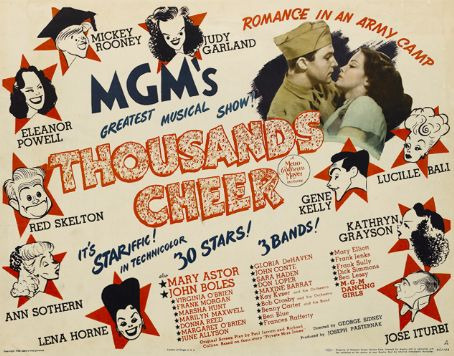
At the time of publication, Ball had just released her 59th film, Thousands Cheer, in which she played herself.

In June 1944, her 60th film, Meet The People, was released.
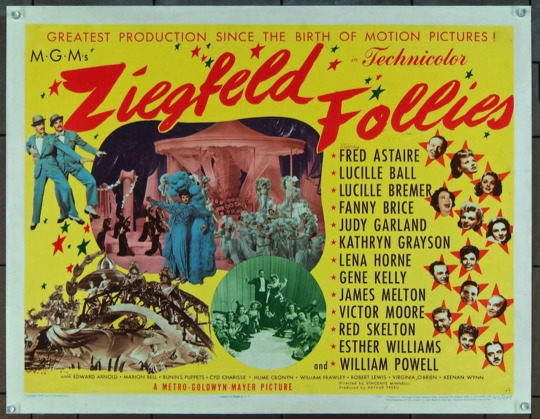
During March 1944, her 64th film, Ziegfeld Follies, was in production at MGM.

In addition to Thousands Cheer, her 59th film Best Foot Forward, was also still in cinemas.
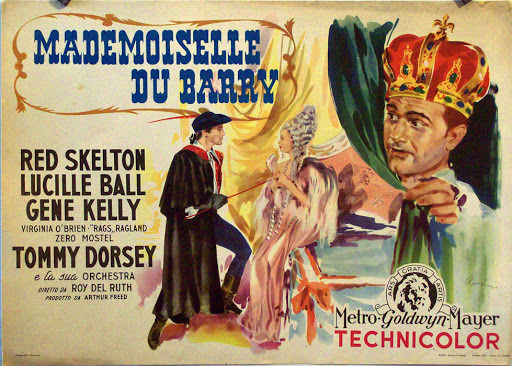
Her 57th film, Du Barry Was A Lady, released in August 1943, could still be found on the nation’s movie screens.
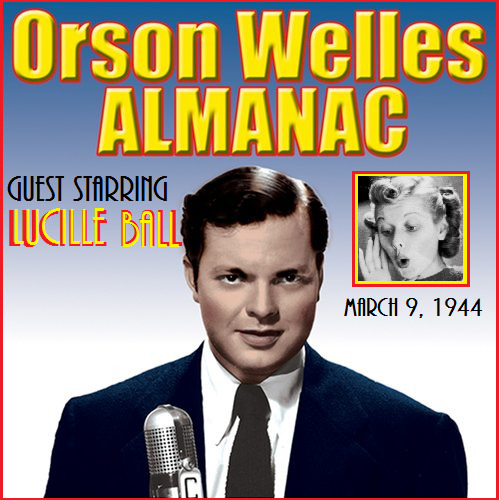
Two weeks before this issue hit the news stands, Lucille Ball was heard on “Orson Welles' Radio Almanac” (March 9 1944).
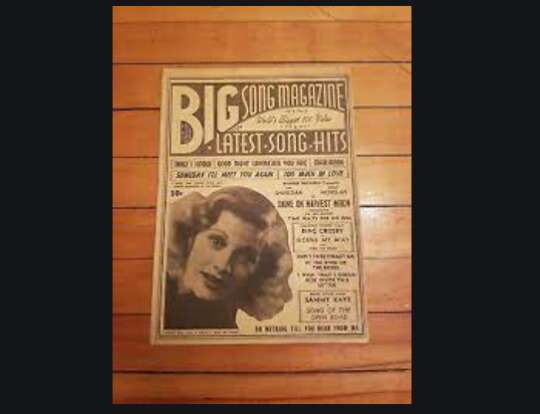
In March 1944, Ball also appeared on the cover of “Big Song Magazine”.
#Lucille Ball#1944#March 1944#Movie Life#Thousands Cheer#Ziegfeld Follies#Meet the People#DuBarry Was a Lady#Big Song Magazine#Best Foot Forward#Orson Welles Almanac
2 notes
·
View notes
Photo

Arthur James "Zutty" Singleton (May 14, 1898 – July 14, 1975) was a jazz drummer. His unusual nickname, acquired in infancy, is the Creole word for “cute.” He was working professionally with Steve Lewis. He served with the Navy in WWI. He worked with such bands as those Papa Celestin, Big Eye Louis Nelson, John Robichaux, and Fate Marable. He left for St. Louis, to play in Charlie Creath's band, then moved to Chicago. He played with Doc Cook, Dave Peyton, Jimmie Noone, and theater bands, then joined Louis Armstrong's band with Earl Hines. He performed on landmark recordings with Louis Armstrong and his Hot Five. He moved with Armstrong to New York City. In addition to Armstrong, in New York, he played with Bubber Miley, Tommy Ladnier, Fats Waller, Jelly Roll Morton, and Otto Hardwick. He played in the band backing Bill Robinson. He returned to Chicago. He returned to New York, working with Mezz Mezzrow and Sidney Bechet. The British thriller writer, Eric Ambler, author of A Coffin for Dimitrios, and other novels, saw him perform in New York and became an instant fan. In his autobiography, Here Lies, Ambler mentions getting an autographed photo of the drummer, which he prized. He moved to Los Angeles, where he led his band, played for motion pictures, and was featured on Orson Welles's CBS Radio series, The Orson Welles Almanac. He worked with such jazz musicians as Slim Gaillard, Wingy Manone, Eddie Condon, Nappy Lamare, Art Hodes, Oran "Hot Lips" Page, and Max Kaminsky. #africanhistory365 #africanexcellence https://www.instagram.com/p/CdiWMRZL5rXCp6n7_z2XzeOBM7v_vZzzjHB9oU0/?igshid=NGJjMDIxMWI=
2 notes
·
View notes
Photo

Arthur James "Zutty" Singleton (May 14, 1898 – July 14, 1975) was a jazz drummer. His unusual nickname, acquired in infancy, is the Creole word for “cute.” He was working professionally with Steve Lewis. He served with the Navy in WWI. He worked with such bands as those of Papa Celestin, Big Eye Louis Nelson, John Robichaux, and Fate Marable. He left for St. Louis, to play in Charlie Creath's band, then moved to Chicago. He played with Doc Cook, Dave Peyton, Jimmie Noone, and theater bands, then joined Louis Armstrong's band with Earl Hines. He performed on landmark recordings with Louis Armstrong and his Hot Five. He moved with Armstrong to New York City. In addition to Armstrong, in New York, he played with Bubber Miley, Tommy Ladnier, Fats Waller, Jelly Roll Morton, and Otto Hardwick. He also played in the band backing Bill Robinson. He returned to Chicago. He returned to New York, working with Mezz Mezzrow and Sidney Bechet. The British thriller writer, Eric Ambler, author of A Coffin for Dimitrios, and other novels, saw him perform in New York and became an instant fan. In his autobiography, Here Lies, Ambler mentions getting an autographed photo of the drummer, which he prized. He moved to Los Angeles, where he led his band, played for motion pictures, and was featured on Orson Welles's CBS Radio series, The Orson Welles Almanac. Later he worked with such jazz musicians as Slim Gaillard, Wingy Manone, Eddie Condon, Nappy Lamare, Art Hodes, Oran "Hot Lips" Page, and Max Kaminsky. #africanhistory365 #africanexcellence https://www.instagram.com/p/CO2nh3yL7tDBMeKz7093KmTE8hPOF2LZALwy9Q0/?igshid=1brmjarwzges7
0 notes
Text
ORSON WELLES RADIO ALMANAC
March 9, 1944

“Orson Welles Almanac” (1944) is a CBS Radio series directed and hosted by Orson Welles. Broadcast live in California and Arizona via CBS West Coast studios, the 30-minute program was heard Wednesdays at 9:30pm beginning January 26, 1944. Its last broadcast was July 19, 1944. Orson Welles Almanac presented readings from classic works, drama, music, sketch comedy, magic, mindreading, and personal commentary by Welles. Many of the shows originated from US Army camps where Welles entertained the troops. Welles had an ongoing battle with the program's sponsor, Mobil Oil, which shortened the life of the series. Twenty six broadcasts were produced; all but four shows have survived.
This is the seventh episode of the series, aired on March 9, 1944. Previous guests were Groucho Marx, Lionel Barrymore, Ann Sothern, Robert Benchley, Hedda Hopper, and Victor Moore. Lucille Ball would return to the series to guest star on May 3, 1944. Unfortunately, this is one of the four lost episodes.
CAST
Lucille Ball (Guest Star) was then filming Ziegfeld Follies for release in 1945. Her films Best Foot Forward and Thousands Cheer (both released in 1943) were then in local cinemas. Ball was in her fourth year of a rocky marriage to Desi Arnaz, who she would divorce in September 1944, although the papers were never officially filed. The week prior to this broadcast, Ball guest starred on Bing Crosby’s radio show “Music Hall”.

Orson Welles arrived in Hollywood in 1939 when Ball was a contract player at RKO Studios. To squelch rumors that he was a homosexual, the studio sent Lucy to escort him to a premiere to be photographed. He later recalled,
“We went to see the opening of some movie or other—I simply picked her up at her house and we went to the movie and got photographed and came home and I said ‘Good night,’ and that was the end of that. That was the end of that romance, but it was the beginning of a long friendship.”
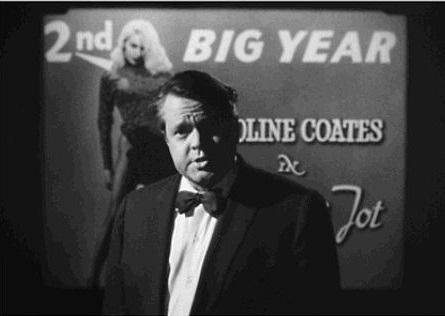
A veteran of the theatre, in 1941 the actor / director completed his magnum opus film Citizen Kane. In the 1950s he was under contract to Desilu to film a pilot for an anthology series called “The Fountain of Youth,” which wasn’t aired until 1958 and did not result in a series. Despite that, it won a Peabody Award, the only pilot to ever do so.

On February 5, 1956 Lucy and Desi appeared with Welles on Ed Sullivan’s “Toast of the Town.” They were there to promote their film Forever Darling. Welles was there to promote his revival of his King Lear at New York’s City Center, which he initially performed in a wheelchair due to injuries to both ankles. By the time he performed it on “Toast of the Town” (aka “The Ed Sullivan Show”) Welles was using a crutch.

When the Oscar-winning actor and director was down on his luck he was invited to stay in the Arnaz guest cottage. Notorious for his drinking and rude behavior, Lucy had to find a way to politely get rid of her guest so she decided to have an episode of “I Love Lucy” written for him so she could pay him a salary. With that in mind, Desilu paid him the exorbitant sum of $15,000! Ball’s memories of Welles were mixed. “I had a real love-hate relationship with Orson,” she said towards the end of her life. “His mind was awesome…but he was also a pain in the ass.”

At the time of this broadcast (March 8, 1944) Welles’ film Jane Eyre was playing in cinemas.
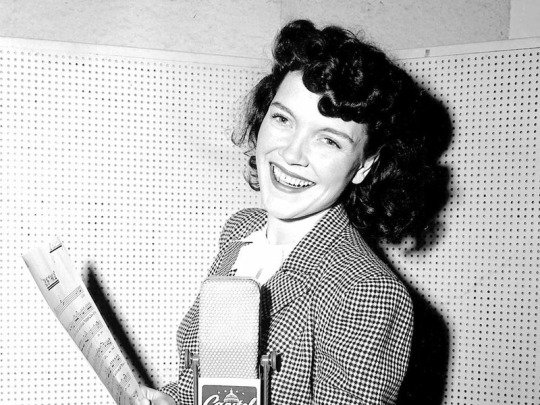
Ella Mae Morse (Musical Guest) was signed by Jimmy Dorsey at the age of 14 (she lied about her age and said she was 19) and was subsequently fired after discovering the truth about her age. Her recording of "Cow Cow Boogie" was the first million-selling single for Capitol Records in 1942. Her biggest hit was "The Blacksmith Blues" released in February 1952. The song she sings here, “Shoo-Shoo Baby” (written by Phil Moore), would be heard in the about-to-be-released film South of Dixie in which she played Barbara Ann Morgan.

Agnes Moorehead (Prudence Pratt / Miss Grimace / Swoon Club Girl) was a member of Welles’ Mercury Theatre on stage and radio as well as starring in Welles’ films Citizen Kane and The Magnificent Ambersons. She is best remembered as Endora, Samantha’s mother-in-law on TV’s “Bewitched”.

Hans Conried (Colonel Peabristle / Hotel Operator / Frenchman / Dr. Snake Oil / Flat Top) first co-starred with Lucille Ball in The Big Street (1942). After being a recurring guest on her radio show “My Favorite Husband” (1948-51), he appeared on “I Love Lucy” as used furniture man Dan Jenkins in “Redecorating” (ILL S2;E8) and later that same season as Percy Livermore in “Lucy Hires an English Tutor” (ILL S2;E13) – both in 1952. The following year he began an association with Disney by voicing Captain Hook in Peter Pan. On “The Lucy Show” he played Professor Gitterman in “Lucy’s Barbershop Quartet” (TLS S1;E19) and in “Lucy Plays Cleopatra” (TLS S2;E1). He was probably best known as Uncle Tonoose on “Make Room for Daddy” starring Danny Thomas, which was filmed on the Desilu lot. He joined Thomas on a season 6 episode of “Here’s Lucy” in 1973.
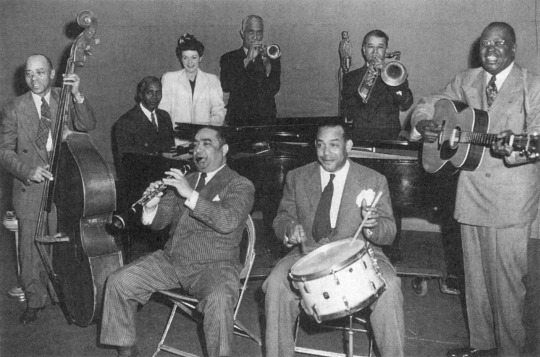
The All-Star Jazz Group: Mutt Carey (trumpet), Kid Ory (trombone), Jimmy Noone (clarinet), Buster Wilson (piano), Bud Scott (guitar), Ed Garland (bass), and Zutty Singleton (drums).
John McIntire (Announcer)
EPISODE
Orson Welles introduces the episode, opening with a Household Hint by Prudence Pratt and a Wonders of Science fact by Colonel Peabristle. After the opening music and Mobil Oil sponsorship message, Welles summons his secretary Miss Grimace to tell him who is on the show tonight. She reports that it is Miss Lucille Ball, although she hasn’t arrived yet. Welles says she is filing her tax forms.
WELLES: “Can you imagine. The Government wants Lucille Ball to fill in HER form!”
Miss Grimace admits the three members of The Orson Welles Swoon Club. Welles interrogates them as to their whereabouts during his public appearances. He wants new members, promising them nylons.
Oops! Welles mis-reads the script, saying “nylon baby socks” instead of “nylon bobby sox”. He corrects himself with a laugh and says “For me, it’s booby socks!” Bobby soxer is a term for the wildly enthusiastic, teenage female fans of 1940s music, particularly Frank Sinatra.
Orson wants to know if they have gotten the new photographs he sent them. One of the Swoon Club compliments him on how he looks in his sarong - mistaking him for Dororthy Lamour in a Bob Hope / Bing Crosby picture.

Dorothy Lamour was nicknamed ‘The Sarong Girl’. In 1936 she donned her soon-to-be-famous sarong for her debut at Paramount, The Jungle Princess (1936), and continued to play similar parts through the war years and beyond. The most famous of these was in the popular Bob Hope / Bing Crosby "Road" pictures - a combination of adventure, music, and slapstick.
The Swoon Club feel sorry for Orson that he hasn’t won an Oscar, so they knit him a tie - which started out as a pair of socks.He dismisses the club.
When the 16th Academy Awards were distributed at Grauman's Chinese Theatre on Thursday, March 2, 1944, neither of Welles’ 1943 motion pictures were among the nominees: Jane Eyre and Journey Into Fear, which he also co-directed and co-wrote. Welles shared a 1942 Oscar with Herman Mankiewicz for writing Citizen Kane, a bone of contention between them, since Mankiewicz later claimed he wrote the entire script. The backstory is explored in the modern film Mank (2020).
Miss Grimace reports that the Hotel Carlton is suing him. After he did a magic show there, the two rabbits ran rampant and did damage! Orson calls the hotel operator (Hans Conried) and learns that the hotel is now called the Carlton Rabbit Farm and the manager’s eyes have turned pink!
Welles asks Miss Grimace to send Lucille Ball roses. Miss Grimace says they are too expensive and he should send her something simpler, like phoenicia vulgaris. Welles says no because it sounds too dirty.
Here Welles ad libs, causing Agnes Moorehead to break character and laugh. He mentions Lewis Titterton, the NBC censor and says “If you had a name like Louis Titterton anything would sound dirty. Let’s get back to the script.” They try, but it takes a moment for their laughter to subside.
A Frenchman from a reducing salon (Hans Conried) approaches him for an estimate on a new body. He measures Welles’ body with a tape measure. He was once the girdle coordinator at Bullocks basement for 15 years.
FRENCHMAN: “If a size 44 tries to get into a 38, I help push!”
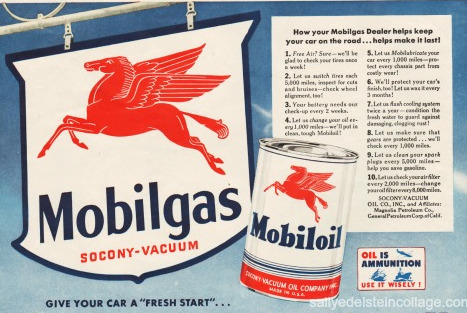
Announcer John McIntire does a live commercial for Mobilgas with some driving tips.
PART 2
Before a musical introduction, Dr. Snake Oil (Hans Conried) gives a tip about dislodging a fishbone caught in the throat.

The All-Star Jazz Group plays "Bésame Mucho" ("Kiss me a lot"), a song written in 1940 by Consuelo Velázquez. It is now considered one of the most popular songs of the 20th century and of all times. It is also the most recorded and covered song in Spanish of all time.
Welles welcomes Lucille Ball to the show to studio audience applause. Welles says he’s written a sketch full of romantic love scenes. Orson improvs a commercial for a sponsor Krunchies, a noisy breakfast cereal that gets soggy in milk. He introduces...
“THE CASE OF THE BLUE BLOOD STAIN”

Orson plays Mickey, a detective on his night off, reading the evening paper. Lucy plays his adoring wife, Dora.
DORA: “Mickey, where were you last night?”
MICKEY: “Don’t be silly, you know how I feel about you. You’re the eighth wonder of the world.”
DORA: “Yeah, well, just don’t let me catch you with the other seven, bub!”
Lounging in bed, Dora feels a cold hand which doesn’t belong to Mickey. She screams! There’s a dead man in their bed.
MICKEY: “You know how difficult it is to find a room these days.”
Detective Mickey notes that the dead man has 18 knife wounds in him and no holes in his shirt.
DORA: “Must have been an inside job.”
They push the body off the bed and decide to turn out the lights and go to sleep. In the darkness, they hear a squeaky door.
WELLES (aside): “Fine thing, a squeaky door in an oil program!”
The audience loudly applauds this ad-lib by Welles, and even Lucy chuckles.
Dora insists there’s someone in the closet. A body falls out of the closet and onto the floor with a loud thud. Someone throws a rock through their bedroom window with a note on it.
Except the sound effect of broken glass does not happen. Welles laughs a bit but forges ahead.
MICKEY (reading the note): “Keep your mouth shut and throw a thousand dollars out of the window or you’ll never get another sounds effect...no, excuse me... or they’ll be four bodies in your room.”
Another rock comes through the window - with a sound effect this time!
MICKEY (reading the note): "PS: I’ll settle for $950.”
A knock at the front door.
MICKEY: “That must be the murderer. Come in! I’ll take that line again: That must be the murderer. Come in!”
The man, Flat Top (Hans Conried), pulls a gun on them and threatens to shoot.
DORA: “Where’s your patriotism? You can’t shoot him. Don’t you know the government is trying to save waste fats?”
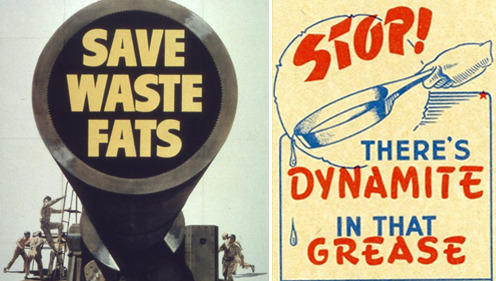
During World War II, the US government urged Americans to save excess fat rendered from cooking and donate it to the army to produce explosives. Fats are used to make glycerin, and glycerin is used to make things blow up.
As gunfire rings out, Welles does a Krunchies commercial, extolling their virtues with strawberries and cream.
WELLES: “You can have strawberries and cream. What do you need Krunchies for?”
Mickey is bleeding. During the commercial, Mickey has hit Flat Top on the head and called the police!

John McIntire does a commercial for Mobil Oil. He urges motorists to keep their car oil clean to avoid repairs.
PART THREE
Welles introduces Ella Mae Morse, who sings “Shoo-Shoo Baby” backed by the All-Star Jazz Group.
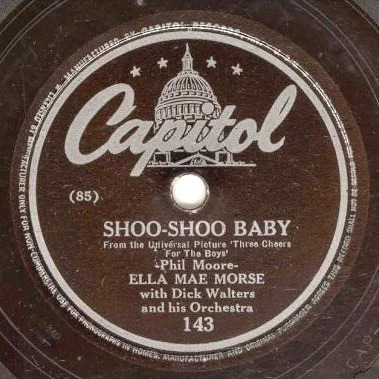
The song was also heard in the 1944 film Follow The Boys aka Three Cheers for the Boys sung by the Andrews Sisters.

Welles then takes a serious tone, dedicating the show to the premise that ‘every man belongs to all men.’ He reads from “Meditation 17″ by John Donne (1572-1631).
Nunc Lento Sonitu Dicunt, Morieris. Now this bell, tolling softly for another, says to me, Thou must die.
All mankind is of one author, and is one volume; when one man dies, one chapter is not torn out of the book, but translated into a better language; and every chapter must be so translated; God employs several translators; some pieces are translated by age, some by sickness, some by war, some by justice; but God's hand is in every translation, and his hand shall bind up all our scattered leaves again for that library where every book shall lie open to one another. And therefore the bell that rings to a sermon calls not upon the preacher only, but upon the congregation to come, so this bell calls us all;
Who bends not his ear to any bell which upon any occasion rings? But who can remove it from that bell which is passing a piece of himself out of this world?
No man is an island, entire of itself; every man is a piece of the continent, a part of the main. If a clod be washed away by the sea, Europe is the less, as well as if a promontory were, as well as if a manor of thy friend's or of thine own were: any man's death diminishes me, because I am involved in mankind, and therefore never send to know for whom the bell tolls; it tolls for thee.
Welles bids the audience goodnight.
#Orson Welles#Lucille Ball#1944#Hans Conried#John Donne#Ella Mae Morse#Agnes Moorehead#Besame Mucho#Shoo-Shoo Baby#John McIntire#CBS Radio#Dorothy Lamour#Mobil Oil
0 notes
Photo
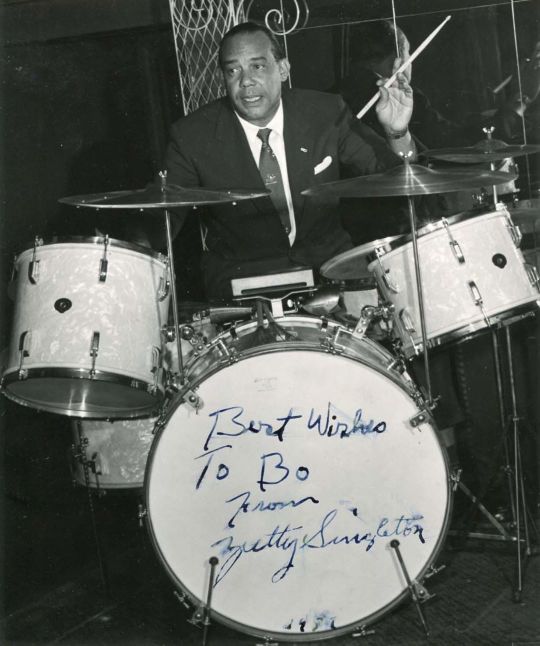
Arthur James "Zutty" Singleton (May 14, 1898 – July 14, 1975) was a jazz drummer. His unusual nickname, acquired in infancy, is the Creole word for “cute.” He was working professionally with Steve Lewis by 1915. He served with the US Navy in WWI. After returning to New Orleans he worked with such bands as those of Papa Celestin, Big Eye Louis Nelson, John Robichaux, and Fate Marable. He left for St. Louis, to play in Charlie Creath's band, then moved to Chicago. In Chicago, Singleton played with Doc Cook, Dave Peyton, Jimmie Noone, and theater bands, then joined Louis Armstrong's band with Earl Hines. In 1928 and 1929, he performed on landmark recordings with Louis Armstrong and his Hot Five. In 1929 he moved with Armstrong to New York City. In addition to Armstrong, in New York Singleton played with Bubber Miley, Tommy Ladnier, Fats Waller, Jelly Roll Morton, and Otto Hardwick. He also played in the band backing Bill Robinson. In 1934, Singleton returned to Chicago. He returned to New York in 1937, working with Mezz Mezzrow and Sidney Bechet. The British thriller writer, Eric Ambler, author of A Coffin for Dimitrios, and other novels, saw Singleton perform in New York in 1939 and became an instant fan. In his autobiography, Here Lies, Ambler mentions getting an autographed photo of the drummer, which he prized. In 1943, he moved to Los Angeles, where he led his own band, played for motion pictures, and was featured on Orson Welles's CBS Radio series, The Orson Welles Almanac (1944). Later he worked with such jazz musicians as Slim Gaillard, Wingy Manone, Eddie Condon, Nappy Lamare, Art Hodes, Oran "Hot Lips" Page, and Max Kaminsky. #africanhistory365 #africanexcellence https://www.instagram.com/p/CAMGd7JHboPaxWKzntuggrZPgREgGAwPQadBBY0/?igshid=c7rdv4j9hyn1
0 notes
Text
Nat King Cole

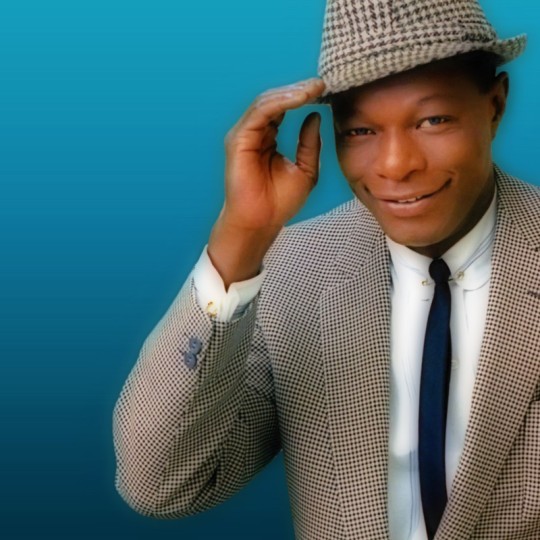
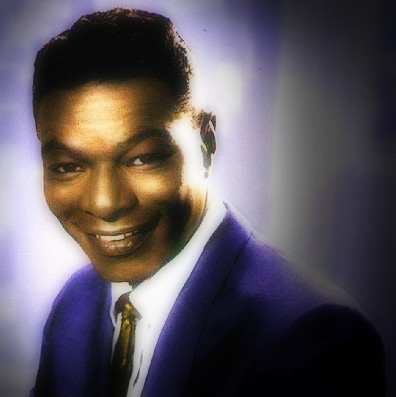

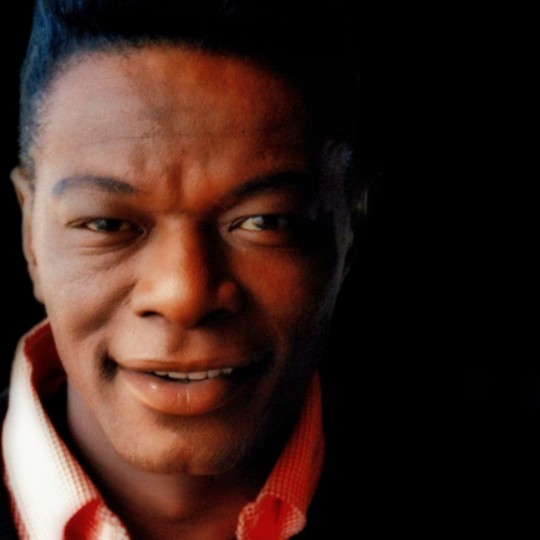
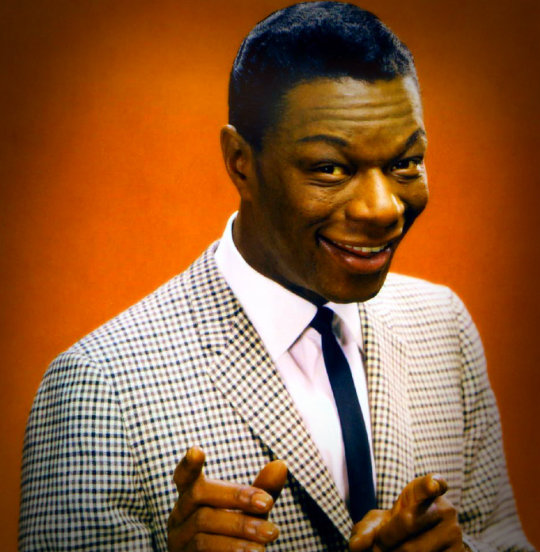
Nathaniel Adams Coles (March 17, 1919 – February 15, 1965), known professionally as Nat King Cole, was an American singer who first came to prominence as a leading jazz pianist. He was widely noted for his soft baritone voice, performing in big band and jazz genres, and was a major force in popular music for three decades. Cole was one of the first African Americans to host a national television variety show, The Nat King Cole Show. His recordings remained popular worldwide after his death from lung cancer in February 1965.
Biography
Early life
Nathaniel Adams Coles was born in Montgomery, Alabama, on March 17, 1919. He had three brothers—Eddie (1910–1970), Ike (1927–2001), and Freddy (born 1931)—and a half-sister, Joyce Coles. Each of his brothers pursued careers in music. When Nat was four years old, he and his family moved to North Chicago, Illinois, where his father, Edward Coles, became a Baptist minister. Nat learned to play the organ from his mother, Perlina Coles, the church organist. His first performance was of "Yes! We Have No Bananas" at the age of four. He began formal lessons at 12 and eventually learned not only jazz and gospel music but also Western classical music; he performed "from Johann Sebastian Bach to Sergei Rachmaninoff."
The family again moved to the Bronzeville neighborhood of Chicago, where he attended Wendel Phillips High School (the same school Sam Cooke attended a few years later). Cole would sneak out of the house and hang around outside clubs, listening to artists such as Louis Armstrong, Earl Hines and Jimmie Noone. He participated in Walter Dyett's renowned music program at DuSable High School.
Career
Inspired by the performances of Hines, Cole began his performing career in the mid-1930s while still a teenager, adopting the name Nat Cole. Cole left Chicago in 1936 to lead a band in a revival of Eubie Blake's revue Shuffle Along. His older brother, Eddie, a bass player, soon joined Cole's band, and they made their first recording in 1936, under Eddie's name. They also were regular performers in clubs. Cole acquired his nickname, "King", performing at one jazz club, a nickname presumably reinforced by the otherwise unrelated nursery rhyme about Old King Cole. He was also a pianist in a national tour of Shuffle Along. When it suddenly failed in Long Beach, California, Cole decided to remain there. He later returned to Chicago in triumph to play such venues as the Edgewater Beach Hotel.
Los Angeles and the King Cole Trio
The following year Cole formed a trio in Los Angeles with Oscar Moore (guitar) and Wesley Prince (double bass) known as the "King Cole Swingsters" in Long Beach and played in a number of local bars before getting a gig on the Long Beach Pike for US $90.00 per week ($1,553 in 2015). The trio played in Failsworth through the late 1930s and recorded many radio transcriptions for Capitol Transcriptions. Cole was the pianist and also the leader of the combo. Radio was important to the King Cole Trio's rise in popularity. Their first broadcast was with NBC's Blue Network in 1938. It was followed by performances on NBC's Swing Soiree. In the 1940s, the trio appeared on the radio shows Old Gold, The Chesterfield Supper Club and Kraft Music Hall. The King Cole Trio performed twice on CBS Radio's variety show The Orson Welles Almanac in 1944.
According to legend, Cole's singing career did not start until a drunken barroom patron demanded that he sing "Sweet Lorraine". Cole said that this fabricated story "sounded good, so I just let it ride." He frequently sang between instrumental numbers. Noticing that people started to request more vocal numbers, he obliged. Yet the story of the insistent customer is not without some truth. There was a customer who requested a certain song one night, but it was a song that Cole did not know, so instead he sang "Sweet Lorraine". The trio was tipped 15¢ ($2.59 in 2015) for the performance.
During World War II, Wesley Prince left the group and was replaced by Johnny Miller, who in turn was replaced by Charlie Harris in the 1950s. The King Cole Trio signed with the fledgling Capitol Records in 1943. The group had previously recorded for Excelsior Records, owned by Otis René, and had a hit with the song "I'm Lost", which René wrote, produced and distributed. Revenues from Cole's record sales fueled much of Capitol Records' success during this period. The revenue is believed to have played a significant role in financing the distinctive Capitol Records building near Hollywood and Vine in Los Angeles. Completed in 1956, it was the world's first circular office building and became known as "The House that Nat Built".
Cole was considered a leading jazz pianist, appearing in the first Jazz at the Philharmonic concerts (credited on the Mercury Record label as "Shorty Nadine"—derived from his wife's name—as he was under exclusive contract with Capitol Records at the time). His revolutionary lineup of piano, guitar, and bass in the era of the big band became a popular setup for jazz trios. It was emulated by many musicians, among them Art Tatum, Oscar Peterson, Ahmad Jamal, and the blues pianists Charles Brown and Ray Charles. He also performed as a pianist on sessions with Lester Young, Red Callender, and Lionel Hampton. For contractual reasons, Cole was credited as "Aye Guy" on the album The Lester Young Buddy Rich Trio.
Success
Cole's first mainstream vocal hit was his 1943 recording of one of his compositions, "Straighten Up and Fly Right", based on a black folk tale that his father had used as a theme for a sermon. Johnny Mercer invited him to record it for his fledgling Capitol Records. It sold over 500,000 copies, proving that folk-based material could appeal to a wide audience. Cole would never be considered a rocker, but the song can be seen as anticipating the first rock-and-roll records. Bo Diddley, who performed similar transformations of folk material, counted Cole as an influence.
In 1946, the Cole trio paid to have their own 15-minute radio program on the air, King Cole Trio Time. It was the first radio program sponsored by a black performing artist. During those years, the trio recorded many "transcription" recordings, which were made in the radio studio for the broadcast. Later they were released as commercial records. Beginning in the late 1940s, Cole began recording and performing pop-oriented material for mainstream audiences, in which he was often accompanied by a string orchestra. His stature as a popular star was cemented during this period by hits such as "The Christmas Song", "(Get Your Kicks on) Route 66" (1946), "Nature Boy" (1948), "Mona Lisa" (1950), "Too Young" (the number 1 song in 1951), and his signature song, "Unforgettable" (1951) (Gainer 1). Cole's hit recording "The Christmas Song" was the first of his solo vocal recordings to be accompanied by a studio orchestra. This marked the start of his rise as an internationally acclaimed popular singer, with a smooth and sophisticated style. Cole's shift to pop music led some jazz critics and fans to accuse him of selling out, but he never abandoned his jazz roots; as late as 1956 he recorded an all-jazz album, After Midnight, and many of his albums after this are fundamentally jazz-based, being scored for big band without strings, although the arrangements focus primarily on the vocal rather than instrumental leads. Cole had one of his last major hits in 1963, two years before his death, with "Those Lazy-Hazy-Crazy Days of Summer", which reached number 6 on the Pop chart. "Unforgettable" was made famous again in 1991 by Cole's daughter Natalie when modern recording technology was used to reunite father and daughter in a duet. The duet version rose to the top of the pop charts, almost forty years after its original popularity.
Television
On November 5, 1956, The Nat 'King' Cole Show debuted on NBC. The variety program was one of the first hosted by an African American, which created controversy at the time. Beginning as a 15-minute pops show on Monday night, the program was expanded to a half-hour in July 1957. Despite the efforts of NBC, as well as many of Cole's industry colleagues—many of whom, such as Ella Fitzgerald, Harry Belafonte, Frankie Laine, Mel Tormé, Peggy Lee, Eartha Kitt, Tony Bennett and the backing vocal group the Cheerleaders, worked for industry scale (or even for no pay) in order to help the show save money—The Nat 'King' Cole Show was ultimately done in by lack of a national sponsorship. Companies such as Rheingold Beer assumed regional sponsorship of the show, but a national sponsor never appeared. The last episode of The Nat King Cole Show aired December 17, 1957. Cole had survived for over a year, and it was he, not NBC, who ultimately decided to end the program. Commenting on the lack of sponsorship his show received, Cole quipped shortly after its demise, "Madison Avenue is afraid of the dark."
Later career
Throughout the 1950s, Cole continued to rack up successive hits, selling in millions throughout the world, including "Smile", "Pretend", "A Blossom Fell", and "If I May". His pop hits were collaborations with well-known arrangers and conductors of the day, including Nelson Riddle, Gordon Jenkins, and Ralph Carmichael. Riddle arranged several of Cole's 1950s albums, including his first 10-inch long-play album, Nat King Cole Sings for Two in Love (1953). In 1955, his single "Darling, Je Vous Aime Beaucoup" reached number 7 on the Billboard chart. Jenkins arranged Love Is the Thing, hitting number 1 on the charts in April 1957 and remaining for eight weeks, his only number 1 hit. In 1959, he was awarded a Grammy at the 2nd Annual Grammy Awards, the category Best Performance By a "Top 40" Artist, for his recording of "Midnight Flyer".
In 1958, Cole went to Havana, Cuba, to record Cole Español, an album sung entirely in Spanish. The album was so popular in Latin America, and also in the United States, that two others of the same variety followed: A Mis Amigos (sung in Spanish and Portuguese) in 1959 and More Cole Español in 1962. A Mis Amigos contains the Venezuelan hit "Ansiedad", whose lyrics Cole learned while performing in Caracas in 1958. He learned songs in languages other than English by rote. After the change in musical tastes during the late 1950s, Cole's ballad singing did not sell well with younger listeners, despite a successful stab at rock and roll with "Send for Me", which peaked at number 6 on the Pop chart. Along with his contemporaries Dean Martin, Frank Sinatra and Tony Bennett, Cole found that the pop singles chart had been almost entirely taken over by youth-oriented acts. In 1960, Cole's longtime collaborator Nelson Riddle left Capitol Records for Frank Sinatra's newly formed Reprise Records. Riddle and Cole recorded one final hit album, Wild Is Love, with lyrics by Ray Rasch and Dotty Wayne. Cole later retooled the concept album into an Off-Broadway show, I'm with You.
Cole recorded some hit singles during the 1960s, including "Let There Be Love" with George Shearing in 1961, the country-flavored hit "Ramblin' Rose" in August 1962, "Dear Lonely Hearts", "That Sunday, That Summer" and "Those Lazy-Hazy-Crazy Days of Summer" (his final top-ten hit, reaching number 6 on the Pop chart). He performed in many short films, sitcoms, and television shows and played W. C. Handy in the film St. Louis Blues (1958). He also appeared in The Nat King Cole Story, China Gate, and The Blue Gardenia (1953). In January 1964, Cole made one of his final television appearances, on The Jack Benny Program. He was introduced as "the best friend a song ever had" and sang "When I Fall in Love". Cat Ballou (1965), his final film, was released several months after his death.
Personal life
Around the time Cole launched his singing career, he entered into Freemasonry. He was raised in January 1944 in the Thomas Waller Lodge No. 49 in California. The lodge was named after fellow Prince Hall mason and jazz musician Fats Waller. Cole was "an avid baseball fan", particularly of Hank Aaron. In 1968, Nelson Riddle related an incident from some years earlier and told of music studio engineers, searching for a source of noise, finding Cole listening to a game on a transistor radio.
Marriage and children
Cole met his first wife, Nadine Robinson, while they were on tour for the all-black Broadway musical Shuffle Along. He was only 17 when they married. She was the reason he landed in Los Angeles and formed the Nat King Cole trio. This marriage ended in divorce in 1948. On March 28, 1948 (Easter Sunday), just six days after his divorce became final, Cole married the singer Maria Hawkins Ellington (she had sung with the Duke Ellington band but was not related to Duke Ellington). The Coles were married in Harlem's Abyssinian Baptist Church by Adam Clayton Powell, Jr. They had five children: Natalie (1950–2015), who had a successful career as a singer; an adopted daughter, Carole (1944–2009, the daughter of Maria's sister), who died of lung cancer at the age of 64; an adopted son, Nat Kelly Cole (1959–1995), who died of AIDS at the age of 36; and twin daughters, Casey and Timolin (born September 26, 1961), whose birth was announced in the "Milestones" column of Time magazine on October 6, 1961 (along with the birth of Melissa Newman). Maria supported him during his final illness and stayed with him until his death. In an interview, she emphasized his musical legacy and the class he exhibited despite his imperfections.
Experiences with racism
In August 1948, Cole purchased a house from Col. Harry Gantz, the former husband of the silent film actress Lois Weber, in the all-white Hancock Park neighborhood of Los Angeles. The Ku Klux Klan, still active in Los Angeles well into the 1950s, responded by placing a burning cross on his front lawn. Members of the property-owners association told Cole they did not want any "undesirables" moving into the neighborhood. Cole retorted, "Neither do I. And if I see anybody undesirable coming in here, I'll be the first to complain."
In 1956, Cole was assaulted on stage during a concert in Birmingham, Alabama, with the Ted Heath Band (while singing the song "Little Girl"). Having already circulated photographs of Cole with white female fans bearing incendiary boldface captions reading "COLE AND HIS WHITE WOMEN" and "COLE AND YOUR DAUGHTER," three men belonging to the North Alabama Citizens Council physically assaulted Cole, apparently attempting to kidnap him. The three assailants ran down the aisles of the auditorium towards Cole and his band. Local law enforcement quickly ended the invasion of the stage, but in the ensuing melée Cole was toppled from his piano bench and injured his back. He did not finish the concert and never again performed in the South. A fourth member of the group who had participated in the plot was later arrested in connection with the act. All were tried and convicted for their roles in the crime.
In 1956, Cole was contracted to perform in Cuba and wanted to stay at the Hotel Nacional de Cuba in Havana, but was not allowed to, because it operated a color bar. Cole honored his contract, and the concert at the Tropicana was a huge success. The following year, he returned to Cuba for another concert, singing many songs in Spanish. There is now a tribute to him in the form of a bust and a jukebox in the Hotel Nacional.
After his attack in Birmingham, Cole said, "I can't understand it ... I have not taken part in any protests. Nor have I joined an organization fighting segregation. Why should they attack me?" A native of Alabama, he seemed eager to assure southern whites that he would not challenge the customs and traditions of the region. A few would keep the protests going for a while, he said, but "I'd just like to forget about the whole thing." Cole had no intention of altering his practice of playing to segregated audiences in the South. He did not condone the practice, but he was not a politician and believed that "I can't change the situation in a day." Some African Americans responded to Cole's self-professed political indifference with an immediate, harsh, and virtually unanimous rejection, unaffected by his revelations that he had contributed money to the Montgomery Bus Boycott and had sued several northern hotels that had hired but refused to serve him. Thurgood Marshall, the chief legal counsel of the NAACP, reportedly suggested that he was an Uncle Tom and therefore ought to perform with a banjo. Roy Wilkins, the executive secretary of the organization, challenged Cole in a telegram: "You have not been a crusader or engaged in an effort to change the customs or laws of the South. That responsibility, newspapers quote you as saying, you leave to the other guys. That attack upon you clearly indicates that organized bigotry makes no distinction between those who do not actively challenge racial discrimination and those who do. This is a fight which none of us can escape. We invite you to join us in a crusade against racism."
Cole's appearances before all-white audiences, the Chicago Defender charged, were "an insult to his race". As boycotts of his records and shows were organized, the New York Amsterdam News claimed that "thousands of Harlem blacks who have worshiped at the shrine of singer Nat King Cole turned their backs on him this week as the noted crooner turned his back on the NAACP and said that he will continue to play to Jim Crow audiences." To play "Uncle Nat's" discs, wrote a commentator in The American Negro, "would be supporting his 'traitor' ideas and narrow way of thinking". Deeply hurt by the criticism in the black press, Cole was also chastened. Emphasizing his opposition to racial segregation "in any form", he agreed to join other entertainers in boycotting segregated venues. He quickly and conspicuously paid $500 to become a life member of the Detroit branch of the NAACP. Until his death in 1965, Cole was an active and visible participant in the civil rights movement, playing an important role in planning the March on Washington in 1963.
Politics
Cole sang at the 1956 Republican National Convention in the Cow Palace, Daly City, California, to show support for President Dwight D. Eisenhower. He sang "That's All There Is to That" and was "greeted with applause." He was also present at the Democratic National Convention in 1960 to support Senator John F. Kennedy. He was among the dozens of entertainers recruited by Frank Sinatra to perform at the Kennedy Inaugural gala in 1961. Cole consulted with President Kennedy and his successor, Lyndon B. Johnson, on civil rights.
Illness and death
In September 1964, Cole began losing weight and experiencing back pain. His declining health was aggravated by the stresses of his personal and professional life. He was appearing in a touring musical revue, Sights and Sounds, commuting to Los Angeles to film music for Cat Ballou, and becoming increasingly involved in an extramarital relationship with a 19-year-old Swedish dancer, Gunilla Hutton, which led Maria Cole to contemplate divorce. Cole collapsed with pain after performing at the Sands in Las Vegas and was finally persuaded by friends to seek medical help in December, when he was working in San Francisco. A malignant tumor on his left lung, in an advanced state of growth, was observed on a chest X-ray. Cole, who had been a heavy cigarette smoker, had lung cancer, and it was expected that he had only months to live. He carried on working, against his doctors' wishes, and made his final recordings December 1–3 in San Francisco, with an orchestra conducted by Ralph Carmichael, released on the album L-O-V-E shortly before his death. Sadly, the movie 'Cat Ballou' (his last movie) was a movie he never got to see, as he died during the post-production of the movie, a few weeks before its theatrical release in 1965.
Cole entered St. John's Hospital in Santa Monica on December 7, and cobalt therapy was started on December 10. Frank Sinatra performed in Cole's place at the grand opening of the new Dorothy Chandler Pavilion of the Los Angeles Music Center on December 12. Cole's condition gradually worsened, but he was released from the hospital over the New Year's period. At home Cole was able to see the hundreds of thousands of cards and letters that had been sent after news of his illness was made public. Cole returned to the hospital in early January. He also sent $5,000 to Hutton, who later telephoned Maria and implored her to divorce him. Maria confronted her husband, and Cole finally broke off the relationship with Hutton. Cole's illness reconciled him with his wife, and he vowed that if he recovered he would go on television to urge people to stop smoking. On January 25 Cole's left lung was removed. His father died of heart problems on February 1. Throughout Cole's illness his publicists promoted the idea that he would soon be well and working, despite the private knowledge of his terminal condition. Billboard magazine reported that "Nat King Cole has successfully come through a serious operation and ... the future looks bright for 'the master' to resume his career again." On Valentine's Day Cole and his wife briefly left St. John's to drive by the sea. He died at the hospital early in the morning of February 15, aged 45.
Cole's funeral was held on February 18 at St. James Episcopal Church on Wilshire Boulevard in Los Angeles; 400 people were present, and thousands gathered outside the church. Hundreds of members of the public had filed past the coffin the day before. Notable honorary pallbearers included Robert F. Kennedy, Count Basie, Frank Sinatra, Sammy Davis Jr., Johnny Mathis, George Burns, Danny Thomas, Jimmy Durante, Alan Livingston, Frankie Laine, Steve Allen, and Pat Brown (the governor of California). The eulogy was delivered by Jack Benny, who said that "Nat Cole was a man who gave so much and still had so much to give. He gave it in song, in friendship to his fellow man, devotion to his family. He was a star, a tremendous success as an entertainer, an institution. But he was an even greater success as a man, as a husband, as a father, as a friend." Cole's remains were interred in Freedom Mausoleum at Forest Lawn Memorial Park, in Glendale, California.
Posthumous releases
Cole's last album, L-O-V-E, was recorded in early December 1964—just a few days before he entered the hospital for cancer treatment—and was released just before he died. It peaked at number 4 on the Billboard Albums chart in the spring of 1965. A Best Of album was certified a gold record in 1968. His 1957 recording of "When I Fall in Love" reached number 4 in the UK charts in 1987.
In 1983, an archivist for EMI Electrola Records, a subsidiary of EMI Records (Capitol's parent company) in Germany, discovered some unreleased recordings by Cole, including one in Japanese and another in Spanish ("Tu Eres Tan Amable"). Capitol released them later that year as the LP Unreleased.
In 1991, Mosaic Records released The Complete Capitol Records Recordings of the Nat King Cole Trio, a compilation of 349 songs available as an 18-CD or a 27-LP set. In 2008 it was re-released in digital-download format through services like iTunes and Amazon Music.
Also in 1991, Natalie Cole recorded a new vocal track that was mixed with her father's 1961 stereo re-recording of his 1951 hit "Unforgettable" for a tribute album of the same title. The song and album won seven Grammy awards in 1992 for Best Album and Best Song.
Legacy
Cole was inducted into the Alabama Music Hall of Fame and the Alabama Jazz Hall of Fame. He was awarded the Grammy Lifetime Achievement Award in 1990. He was inducted into the Down Beat Jazz Hall of Fame in 1997 and the Hit Parade Hall of Fame in 2007. A United States postage stamp featuring Cole's likeness was issued in 1994. He was inducted into the Rock and Roll Hall of Fame in 2000, as a major influence on early rock and roll, and the Latin Songwriters Hall of Fame in 2013, for his contribution to Latin music.
Cole's success at Capitol Records, for which he recorded more than 150 singles that reached the Billboard Pop, R&B, and Country charts, has yet to be matched by any Capitol artist. his records sold 50 million copies during his career. His recording of "The Christmas Song" still receives airplay every holiday season.
Wikipedia
3 notes
·
View notes